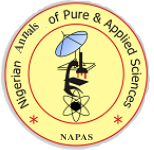Estimating the Proportion of Alcohol, Illicit Substance and Drug Users and Impacts on Project Performance in Construction Sites in Adamawa and Taraba State, North Eastern Nigeria
DOI:
Keywords:
Homophily, Recruits, Drug users, Construction sitesAbstract
This study used the Respondent Driven Sampling (RDS) method to estimate the proportion of alcohol Illicit Drug and Substance Users amongst Construction Sites workers in Adamawa and Taraba States of Nigeria. 26 seeds (initial recruits) were selected via convenience sampling from 26 construction sites in the two States with 13 from each state. 330 coupons were distributed to each of the states, making a total of 660 recruits. A behavioural questionnaire was administered on the recruits through the site’s managers. The RDSAT 7.1 software was used for the analysis, taking into account their network sizes and homophily values, while Net-draw was used for graphing the recruitment chains. The result shows that RDS is a reliable means as out of the 660(100%) targeted sample size of recruits, 623(94%) were successfully recruited. Results further revealed that, in both states, artisans of age less than 30 are mostly involved in drug abuse and that carpenters who engaged in drugs/substance/alcohol used incurred the highest cost compare to other trades. It is recommended that the method can be extended to studying other hidden populations in the country.
Downloads
Published
How to Cite
Issue
Section
License
Copyright (c) 2020 D Jibesen, AC Haruna, IR Yamusa

This work is licensed under a Creative Commons Attribution-ShareAlike 4.0 International License.



 Contact Us
Contact Us Editorial Team
Editorial Team Join As A Reviewer
Join As A Reviewer  Request For Print Copy
Request For Print Copy


 Cprint Publishers
Cprint Publishers